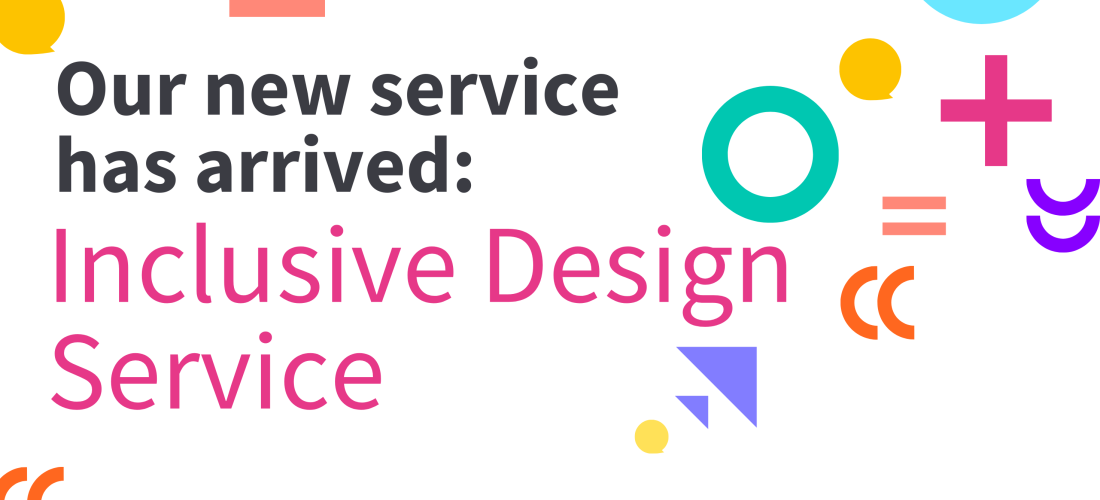Have you ever received a letter from the bank or a lawyer that left you confused? Or tried to follow instructions for a device or process that just didn’t make sense? Remember how that felt. Frustrating. Isolating. Like it wasn’t meant for you. At People First, we believe no one should feel that way. Everyone deserves information they can understand.
Until now, our focus has been on creating Easy Read materials. But we’re expanding, because accessibility is just the beginning. You’ve probably heard the terms accessible design and inclusive design. They sound similar. They overlap. But they’re not the same. Understanding the difference isn’t just about meeting standards. It’s about creating experiences that work for more people—regardless of ability, background, or circumstance.
So, what’s the real difference between accessible and inclusive design and why should you care?
What is accessible design?
Accessible design focuses on making sure people with disabilities can use your product, service, or space. It’s about removing barriers that might exclude someone from participating fully.
Accessible design often follows established guidelines and legal requirements. Examples of accessible design include:
- Adding alt text to images for screen readers
- Making websites navigable by keyboard
- Ensuring high colour contrast for users with low vision
- Providing captions on videos
In short, accessible design ensures that more people, especially disabled people, can access and use what you create.
What is inclusive design?
Inclusive design goes further. It's not just a checklist, it's a mindset and a process. Inclusive design means designing with diversity in mind from the very beginning. Instead of adapting something after the fact, it considers a wide range of people’s needs from the outset.
This includes people of different:
- Abilities
- Ages
- Backgrounds
- Genders
- Cultures
- Languages.
Inclusive design recognises that there’s no such thing as an 'average' user. By involving diverse voices early and often, it leads to better, more usable outcomes for everyone.
Why is this important?
When everyone designs accessibly and inclusively, everyone benefits, not just disabled people.
For the individual, it means feeling seen, respected, and valued. It means no longer struggling alone to understand or use something that should be easy. It means confidence instead of confusion, independence instead of frustration.
It transforms how people feel about the services, products, or organisations they rely on, building trust, loyalty, and a true sense of belonging.
Accessible and inclusive design isn’t just a feature, it’s an invitation: You matter. You belong. You’re welcome here.
For businesses and organisations particularly, the benefits are significant:
- Reach a Wider Audience: Inclusive design helps you connect with a more diverse customer base—including the 16 million disabled people in the UK.
- Communicate More Effectively: Clear, straightforward language benefits people with cognitive differences and those who speak English as a second language.
- Build Trust and Customer Loyalty: Features like step-free access, accessible websites, and inclusive service design increase customer confidence and encourage repeat visits.
- Unlock the Purple Pound: The Purple Pound - the spending power of disabled people and their households is worth an estimated £274 billion in the UK each year. Ignoring this market is not just exclusionary, it’s a missed business opportunity.
- Reduce Legal and Reputational Risk: Meeting accessibility standards helps ensure compliance and avoids mistakes.
They start with each of us. How we communicate, how we design, how we think about others all matters.
How People First can help?
At People First, we’re dedicated to supporting you in embedding true accessibility and inclusion into your work and everyday practice. We understand that meaningful change comes from more than just good intentions. It requires practical, actionable steps grounded in real experiences.
We offer tailored services including:
- Reviewing your current position to identify strengths and areas for improvement in accessibility and inclusion within written content.
- Developing inclusive design resources that are user-friendly and effective.
Currently we are delivering this with people with lived experience of learning disability or neurodiversity, ensuring insights and solutions support members of those communities.
Our approach is practical, kind, and person-centred. We focus on helping you transform your commitment to inclusion into real, measurable impact—making your work not just accessible, but truly welcoming members of the neurodiversity and learning disability community.
To speak to our inclusive design team email us at: [email protected]
Further Reading
Web Content Accessibility Guidelines (WCAG)
Accessible Information standard
Written by: Cat Robson Expert by Experience leading the Inclusive Design service.
